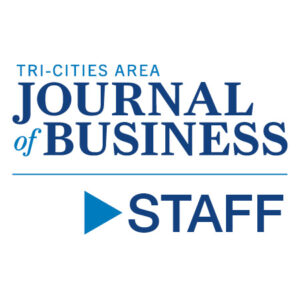
Home » SMRs will bring opportunities, challenges and jobs. Are we ready?
SMRs will bring opportunities, challenges and jobs. Are we ready?

May 15, 2025
Small modular reactors offer a pragmatic and scalable path to reliable energy. With backing from government and the private sector, the Tri-Cities and the broader U.S. have a chance to lead a nuclear energy renaissance.
And what better place to stage it than in the Tri-Cities, with our community’s deep ties to nuclear development?
It’s clear the public wants to know more about SMRs, judging from the attendance and questions during a recent late afternoon talk on the topic.
The three-person panel featured experts from Energy Northwest, Pacific Northwest National Laboratory and Washington State University, attracting more than 160 people. It was organized by the Institute for Northwest Energy Futures at WSU Tri-Cities and moderated by our very own Kristina Lord, executive editor of the Tri-Cities Area Journal of Business.
Richland’s Energy Northwest has partnered with Amazon to develop up to 12 SMR modules generating about 960 megawatts at full build-out.
Panelist Greg Cullen, vice president for energy services and development at Energy Northwest, noted that the Tri-Cities probably has the biggest nuclear-qualified trained workforce in the country.
But even more workers will be needed, especially when SMRs could be less than a decade away in the Tri-Cities.
“We know in the United States that there are not enough nuclear workers to work on the current suite of power reactors that we have in this country,” said panelist Corey Hines, director of the Nuclear Science Center at WSU, where he’s helped train and license more than 60 reactor operators.
Partnerships with schools and local unions will be key to a well-rounded pipeline of skilled workers. Columbia Basin College in Pasco is doing its part. It is one of a handful of colleges nationwide with a dedicated nuclear program, Cullen said.
SMR construction may require a workforce of up to 2,000 or more, Cullen said. “We need all kinds of craftspeople,” including electricians, pipefitters, carpenters, welders and more. He also noted the need for technical workers: “A ton of engineers, a ton of civil engineers, all kinds of engineers, all kinds of scientists, all kinds of technical people,” he said.
Once the SMRs are operational, the workforce will number between 100 to 200, Cullen said.
SMRs have the potential to reshape how we produce and distribute energy, and the moment is ripe if stakeholders work in concert to deliver on both the promise and the responsibility that comes with nuclear power. If any community has the right skillset for this, it’s the Tri-Cities.
Opinion Our View Education & Training Energy Labor & Employment
KEYWORDS May 2025
Related Articles





